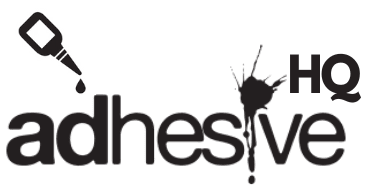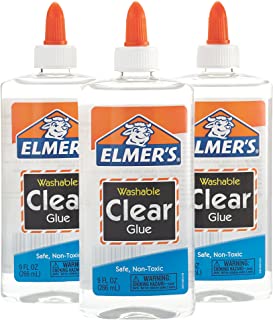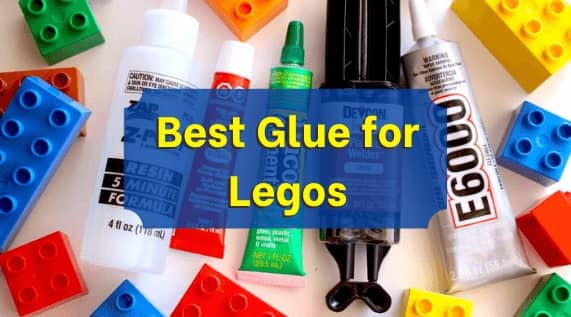Rubber Cement vs Super Glue
Rubber cement and super glue are two of the most versatile and essential adhesives in our daily lives. Whether it’s for crafting, household repairs, or even industrial applications, these two adhesives have proven their usefulness time and time again.
Rubber cement provides a strong, flexible bond, while super glue offers a quick-drying, permanent solution. So whether you’re a DIY enthusiast or just in need of a quick fix, rubber cement and super glue are your go-to options for all your adhesive needs!
Not only do these adhesives offer convenience, they also come in a variety of formulas to suit different needs. For instance, you can find rubber cement in both liquid and paste form, each with their own unique properties.
Super glue, on the other hand, comes in different viscosities, allowing for precise application and easy penetration into tight spaces. Additionally, both rubber cement and super glue are available in waterproof and heat-resistant formulas, making them ideal for a wide range of projects.
Rubber Cement Review
Rubber cement is a popular adhesive made from elastic polymers dissolved in a solvent. It is often used for arts and crafts, paper mounting, and other applications where a temporary or repositionable bond is desired.
Composition:
- Elastic polymers: The main component of rubber cement, providing its characteristic elasticity and ability to be repositioned.
- Solvent: Dissolves the elastic polymers, allowing the adhesive to be applied in a liquid form.
- Fillers: In some formulations, fillers may be added to adjust the thickness and consistency of the adhesive.
Product Guide:
- Liquid vs. Paste Form: Rubber cement comes in both liquid and paste form, each with its own unique properties. Liquid rubber cement dries more quickly, making it ideal for fast-paced projects, while paste rubber cement provides a more controlled application and is better suited for delicate projects.
- Drying Time: The drying time of rubber cement varies depending on the brand and formula. Generally, it takes about 24 hours for rubber cement to fully dry, but some fast-drying formulas can be ready in as little as 15 minutes.
- Repositionability: Rubber cement’s signature feature, the bond it provides is repositionable and can be easily removed without damaging the surface it was applied to.
- Odor: Rubber cement has a strong, pungent odor due to the solvents used in its composition. Some brands offer low-odor formulas for a more pleasant experience.
- Cleanup: Rubber cement can be cleaned up with soap and water while it is still wet, but it becomes difficult to remove once it has dried.
In summary, rubber cement is a versatile adhesive that provides a temporary and repositionable bond. Its composition includes elastic polymers, a solvent, and fillers. It comes in both liquid and paste form, with a range of drying times, repositionability, odor, and cleanup properties.
Super Glue Review
Super glue, also known as cyanoacrylate adhesive, is a fast-drying, strong, and permanent bonding agent used in a wide range of applications, including household repairs, arts and crafts, and industrial uses.
Composition:
- Cyanoacrylate: The main component of super glue, a type of fast-drying, strong synthetic resin.
- Solvents: In some formulas, solvents may be added to improve flow and penetration of the adhesive.
- Stabilizers: To prevent the cyanoacrylate from prematurely curing, stabilizers are often added to the formula.
Product Guide:
- Drying Time: Super glue dries in a matter of seconds, making it ideal for quick fixes. However, this fast-drying nature also means that mistakes can be difficult to correct.
- Strength: Super glue provides a strong, permanent bond that is ideal for a variety of applications.
- Viscosity: The viscosity of super glue varies between brands and formulas. Thinner formulas are easier to apply but can run, while thicker formulas are better for vertical applications and have less mess.
- Waterproofing: Some super glue formulas are waterproof, making them ideal for use in humid or wet environments.
- Heat Resistance: Some super glue formulas are heat-resistant, making them ideal for use in high-temperature environments.
In summary, super glue is a fast-drying, strong, and permanent adhesive. Its main component is cyanoacrylate, with solvents and stabilizers added in some formulas. Super glue comes in different viscosities, with some formulas being waterproof and heat-resistant. Its fast-drying nature and strong bond make it ideal for quick repairs and projects where a permanent bond is needed.
Differences Between Rubber Cement And Super Glue
- Purpose: Rubber cement is used for temporary, repositionable bonding, while super glue is used for strong, permanent bonding.
- Drying Time: Super glue dries very quickly, usually within seconds, while rubber cement takes several hours to dry.
- Bond Strength: Super glue provides a strong, permanent bond, while rubber cement provides a temporary, repositionable bond.
- Consistency: Rubber cement is available in liquid or paste form, while super glue is typically a thin liquid.
- Repositionability: Rubber cement’s bond is repositionable and can be easily removed without damaging the surface it was applied to, while super glue’s bond is permanent.
- Odor: Rubber cement has a strong, pungent odor, while super glue has a very strong and potentially irritating odor.
- Cleanup: Rubber cement can be cleaned up with soap and water while it is still wet, while super glue is difficult to remove once it has dried.
- Toxicity: Super glue can cause skin irritation and must be handled carefully, while rubber cement is generally considered to be safer to use.
Can you use super glue instead of rubber cement?
No, it is not recommended to use super glue as a substitute for rubber cement. While both are adhesives, they have different properties and are used for different purposes. Rubber cement is temporary and repositionable, while super glue is permanent and creates a strong bond.
Additionally, rubber cement can be easily removed without damaging the surface it was applied to, while super glue is difficult to remove once it has dried. Using super glue instead of rubber cement can result in a permanent bond that cannot be easily removed, potentially damaging the surfaces being bonded.
What is rubber cement good for?
Rubber cement is a type of adhesive that is commonly used for:
- Arts and crafts: Rubber cement is often used for mounting photos, creating collages, and other creative projects.
- Stationery: Rubber cement is a popular choice for adhering paper to surfaces, as it is easy to remove without leaving residue.
- Temporarily bonding materials: Rubber cement is a good choice for temporarily bonding materials that will eventually need to be separated, such as holding patterns in place for sewing or temporarily affixing a piece of paper to a wall.
- Education: Rubber cement is often used in classrooms and other educational settings for a variety of projects, as it is easy to remove and does not leave residue.
- Bookbinding: Rubber cement is often used in bookbinding to temporarily affix pages or covers until the glue has fully cured.
In summary, rubber cement is a versatile adhesive that is good for temporary bonding, creative projects, and a variety of other applications where a temporary bond is desired.
Final Thoughts
In conclusion, rubber cement and super glue are two commonly used adhesives that have different properties and are used for different purposes.
Rubber cement is a temporary and repositionable adhesive that is good for creative projects, temporarily bonding materials, and other applications where a temporary bond is desired. Super glue, on the other hand, provides a strong, permanent bond and is used for bonding surfaces together permanently.
When choosing between rubber cement and super glue, it is important to consider the specific needs of your project, including the type of bonding desired, drying time, bond strength, and repositionability. By understanding the differences between these adhesives, you can make an informed decision and select the best adhesive for your needs.



